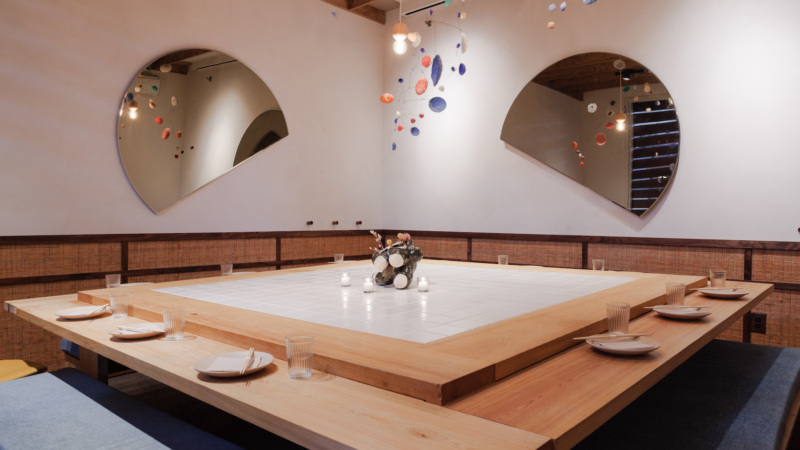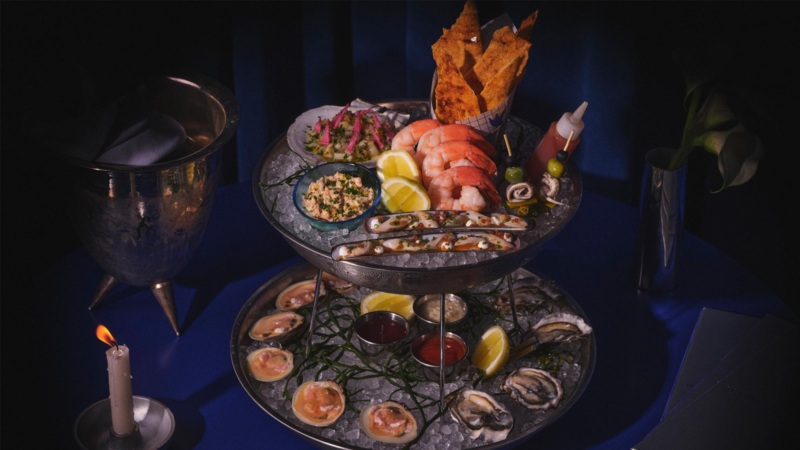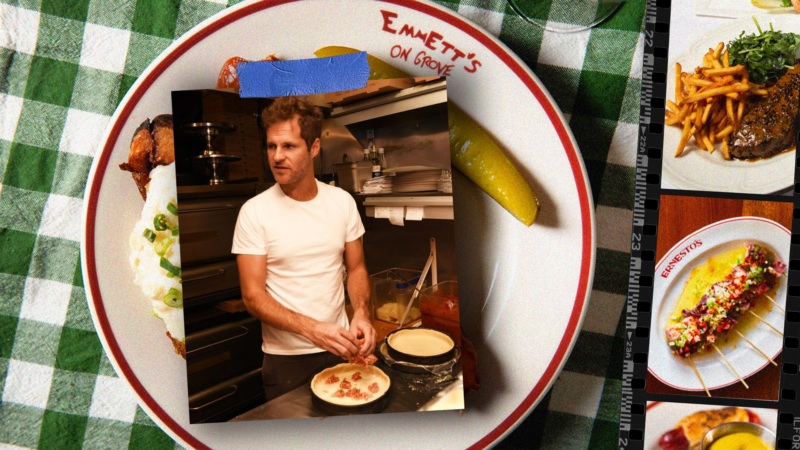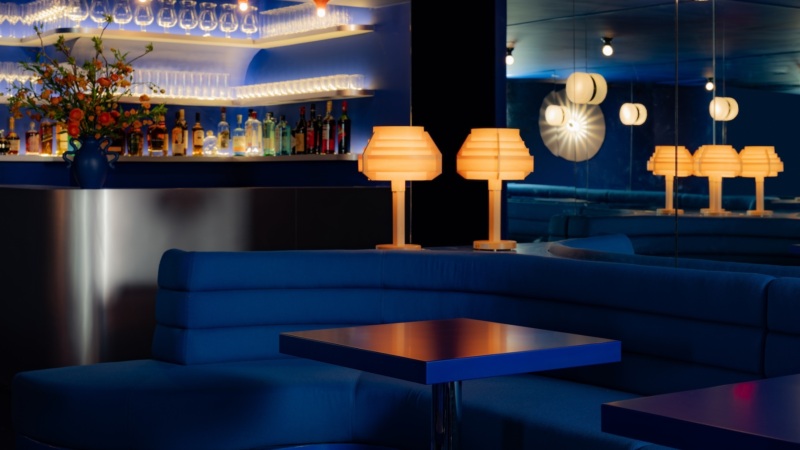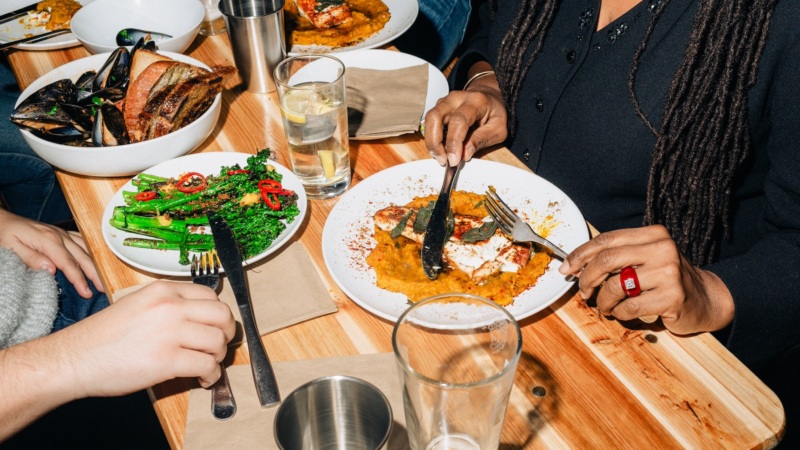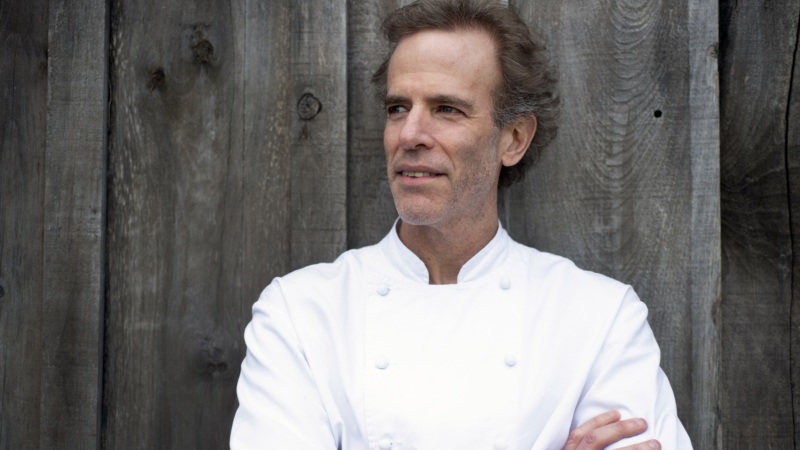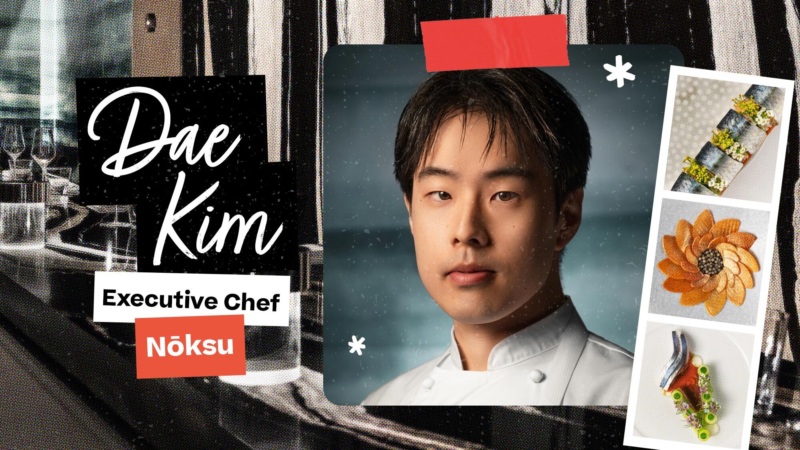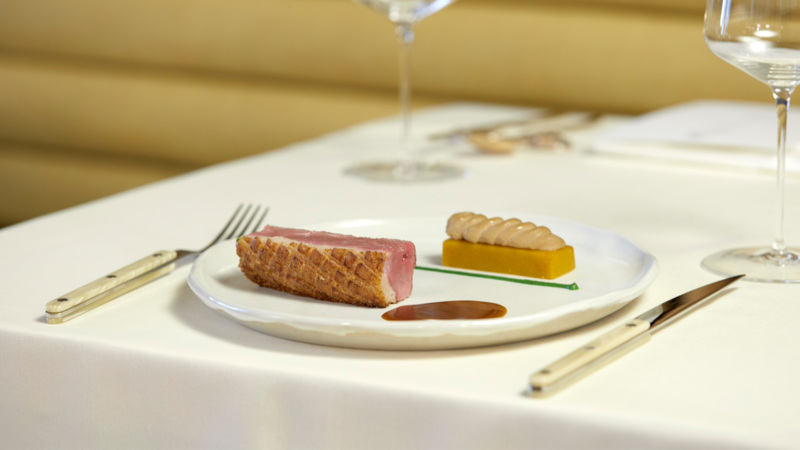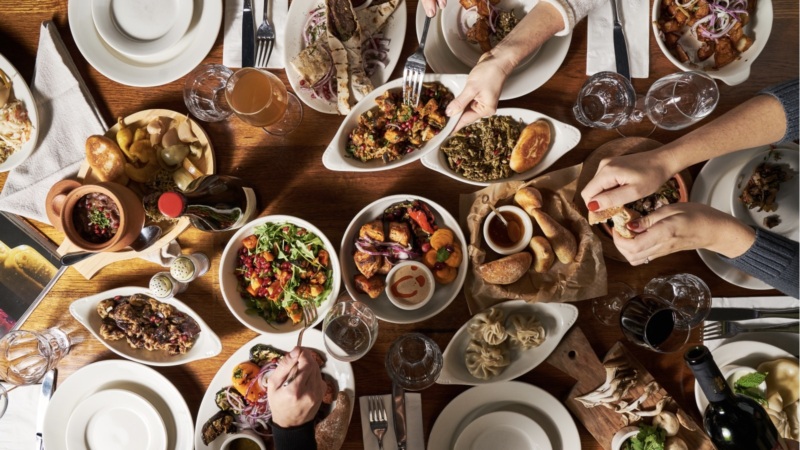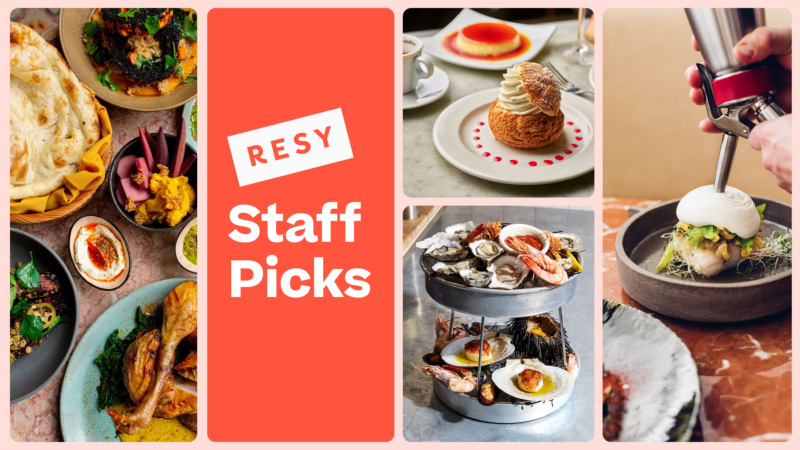
Breaking Bread and Breaking Ground with Baker Zoe Kanan
For Zoe Kanan, growing up in Texas, sweets were a common thread. She was a picky eater with a vegetarian mom and a dad who took part in competition barbecue. More often than not, three different meals were taking place in her house at once. Dessert was something they could all eat together. “And on top of that I always had a huge sweet tooth,” she admits.
Kanan is bubbly and soft-spoken. She has a measured temperament that reflects her dedication and hard-earned skills, yet she’s quick to giggle—as she does while sharing how she recently overheard a guy walking by the Freehand, where she works, describing it to his date as having “like, eight bars on the rooftop.” There is only one, called Broken Shaker, but the sentiment is not far off. Since opening its doors in mid-January, the stylish, locally-curated hotel has turned Lexington Avenue between 23rd and 24th into the buzziest block in New York City with a slow roll-out of on-site hot spots, including two full-service restaurants from hitmaker Gabriel Stulman. Kanan is the head baker for both, and depending on the time of day, you might be lucky enough to catch a waft of her sugary chocolate morning buns or anise-flecked black bread. The former are served at the airy, living room-like Studio, on the second floor, and the latter grounds the menu at cornerside stunner Simon & The Whale, on the first. Add George Washington Bar to the mix (just across the way from Studio), and the lot represents Stulman’s first foray outside of the vibey, small-scale West Village haunts he’s known for. It was a big project and, for Kanan, a major undertaking, not just in terms of scale but new territory as well.
Not a pastry chef
Having studied traditional French pastry-making at the French Culinary Institute (now known as the International Culinary Center), Kanan has the backbone of a restaurant pastry chef, but the soul of a baker. Shortly thereafter, she took a job working for Christina Tosi at Milk Bar, ending up on the breads station. And it’s here that Kanan found her niche. A stint at cult-favorite pie shop Four & Twenty Blackbirds and bread-making under Dianna Daoheung at Mile End followed, culminating in a role at Sadelle’s, where Kanan found another mentor in Melissa Weller. It was Tosi, however, that put her in touch with Stulman—who initially pitched her on a pastry chef position. Kanan had to turn him down. As she puts it, “basically, I told him that I wasn’t a pastry chef and if he wanted to hire a head baker, ‘I’m your girl.’” He was intrigued.
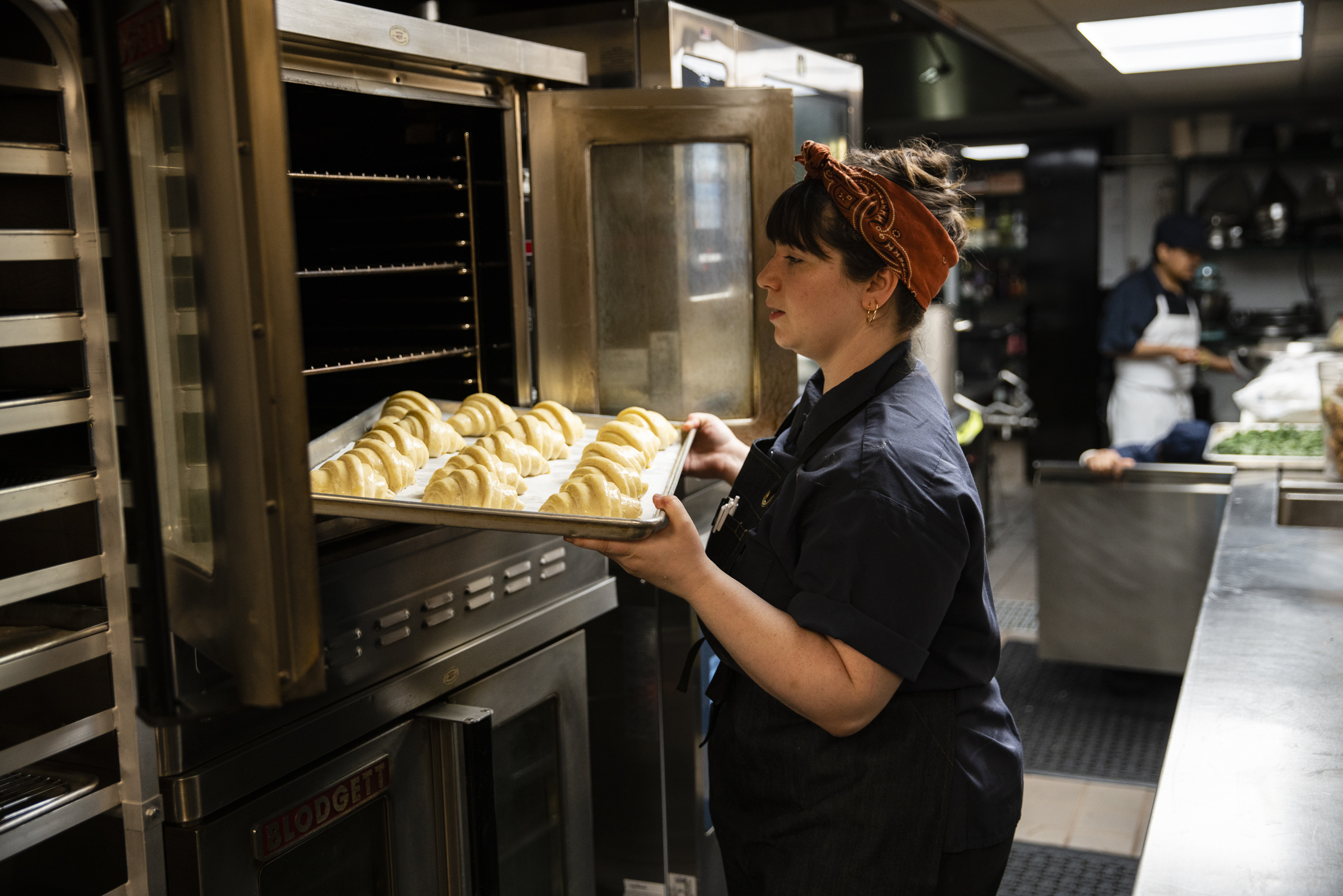
Studio, an all-day café, draws inspiration from North Africa and the Near East, while Simon & The Whale—helmed by chef Matt Griffin—focuses on American cuisine with global influences. That meant she would be making all of the flatbreads for and have a full pastry counter within Studio, she could create a house bread for Simon & The Whale, and, if there was a burger, it would be served on a house-made bun. (The Simon Burger recently debuted on the restaurant’s brand-new lunch menu, served on pressed polenta challah). Stulman was sold. At the time, Kanan was working for Michael White’s Altamarea Group as the head baker of Vaucluse. Although she is Jewish and went on a culinary birthright trip to Israel (where she discovered boureka, on the menu at Studio), her career hadn’t brought her into contact with pastries from that part of the world. Accepting the opportunity “felt like the right thing to do.”
All in a day’s work
Daily bakery production begins at 5:00 am, although she usually arrives around 7:00 am. Kanan knows just as well as anyone else running a kitchen department that staffing can be tough, but when she can, she hires from within her restaurant family. Of her bakers that handle the early morning shift, one worked with her at Vaucluse while another is a friend of the chef de cuisine at Studio. Once the bulk of the day’s work is done, she’ll spend a few hours developing recipes. So far, her simit (read: Turkish bagel) and sourdough croissant are fixtures at Studio, while her signature black bread and a fish sandwich (served on a challah bun) have taken off at Simon. Since the restaurants are still so new, the team is refining and establishing its mainstays. Recently, she’s been offering sfenj—a Moroccan-style doughnut—as a special at Studio, with plans to add it to the menu. The dough “has quite a bit of sourdough and is very hydrated, almost batter-like.” She’s very partial to sourdough, using it sometimes as a natural leavener, but more often as a seasoning (“to add a little bit of complexity to the flavor”) in her creations. The wetness of the sfenj dough “creates big, chewy air pockets” when fried. Then, she coats them in Kunik’s unfiltered, New York state wildflower honey and tosses them in an herb sugar made with fresh sage, which provides a savory nuance. They’ve gone over quite well, especially at brunch, and rightfully so. During the week, the typical diner is often a guest of the hotel who, Kanan finds, tend to “opt for the less indulgent options, because it’s more of a functional breakfast.”
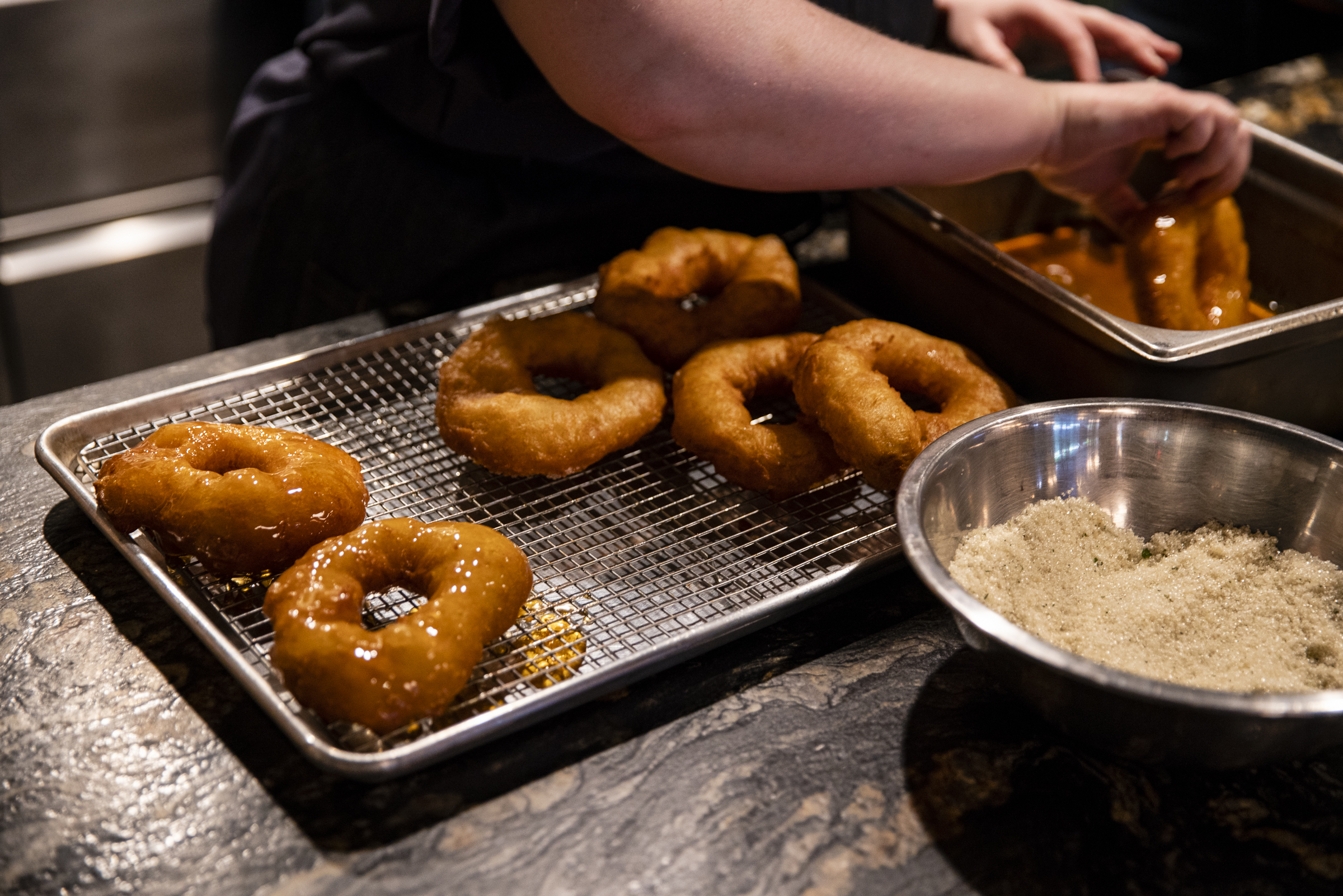
As a starting point, Kanan will draw upon her extensive cookbook collection for guidance (for this project specifically, the work of Anissa Helou) as well as her past experience. Her time spent at Black Seed and Sadelle’s gave her plenty to go off when she was creating her simit, whose sweetness and sheen come from grape molasses, a traditional Turkish ingredient. The aim was to “riff on the typical New York bagel,” which are generally boiled in water with a bit of honey or barley malt syrup, “and do a version that the typical diner or traveler is less familiar with, but [that is] still reminiscent of what everyone knows and loves as a bagel.” For research, she visited a few Turkish restaurants in the city that serve simit (like Lion’s Milk in Williamsburg and Güllüoglu in Astoria) and watched YouTube videos of “dudes in Turkey [making] like 50 simit in 60 seconds,” practicing the shaping until she got it right.
Staying inspired through dining out
Kanan gets a lot of her inspiration from dining out. “I read a lot about openings, or places that are evolving or doing new things,” she said. Even though she has very little free time, she likes to spend it “going out and tasting all there is to eat in New York.” When she first made sfenj, they reminded her of a cross between Mexican sopapías and beignets, both of which are frequently eaten in her hometown of Houston but are nearly impossible to find in New York. So she was feeling a bit nostalgic when she popped into SOS Chefs, a specialty spice shop favored by chefs, around the corner from her apartment in the East Village. “Every time I go in there,” she recounts, “there’s always some super-talented, brilliant chef” talking to owner Atef Boulaabi, and this time it was Daniela Soto-Innes (Cosme, ATLA). Kanan didn’t introduce herself, but a little eavesdropping on their conversation about fruit vinegars “sealed the deal”: it was about time she ate at Cosme.
Another recent meal was at King. She was enthralled with Ruth Rogers after hearing her speak at Cherry Bombe Jubilee and dining at Clare de Boer and Jess Shadbolt’s SoHo restaurant (both former chefs at London’s The River Café) “felt like the closest thing,” she laughs. “I just loved the simplicity and care and the artful qualities,” she gushed. Superiority Burger and Abraço are amongst the local spots that keep her inspired, the latter of which is due in part to “an incredible baking program.” Kanan adds, “I think the quality and the caliber of what they’re doing there is higher than people know.”
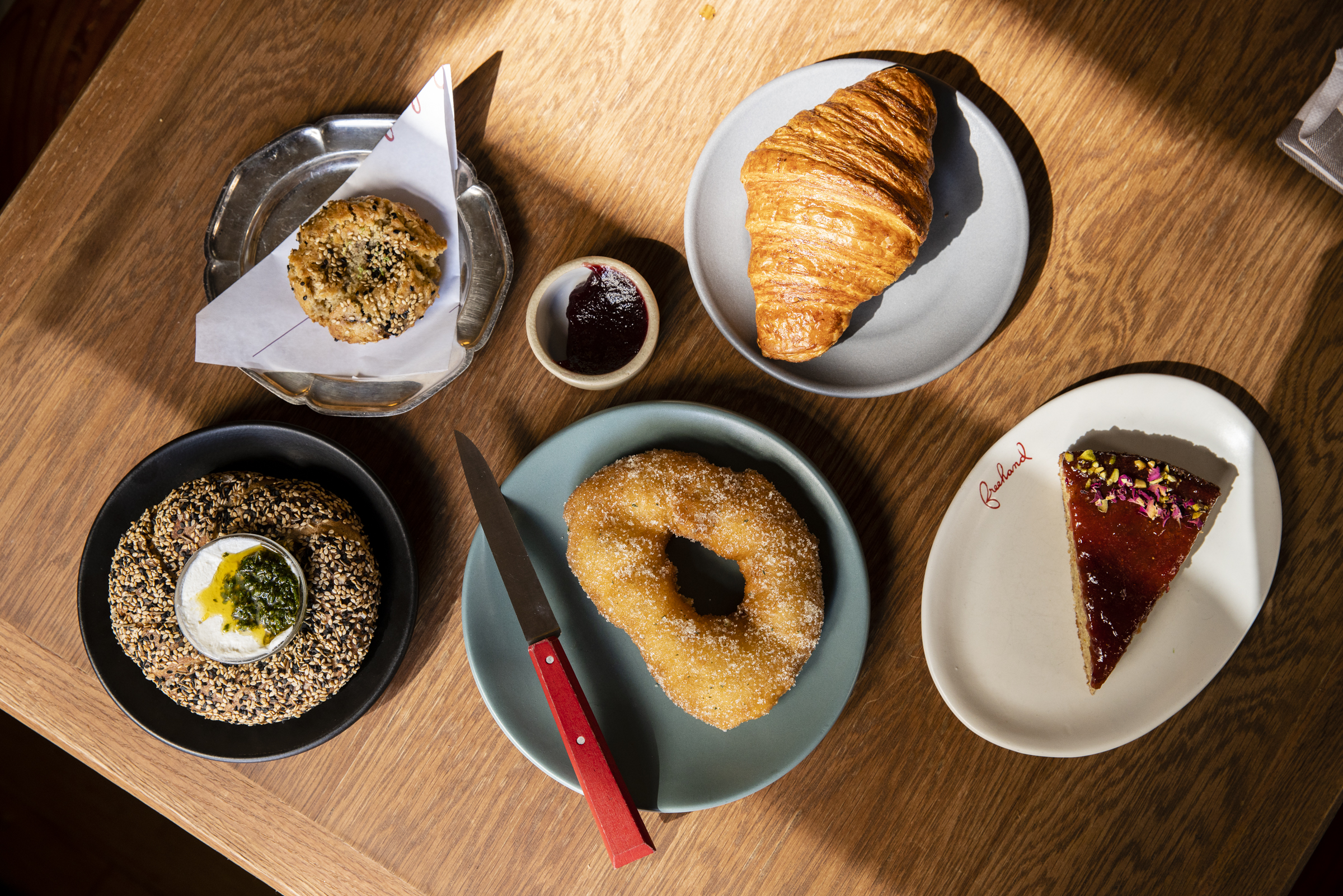
There’s no denying the importance of Instagram when it comes to sourcing ideas. Kanan speaks about pastries being made all over the world, in cities she’s never been to. “Just yesterday I was watching a video of Juno, the bakery in Copenhagen,” she explains, as research for her process. “They’re weighing their croissants and they’re watching them laminate…” she began, “their croissants are beautiful, so of course I want to know how they’re executing them. But sometimes I think it’s also a detriment, because [then] everybody can make the same things.” Adding her own personality, sensibility, and style is key to her practice and there are certain techniques that she often falls back on. For example, the cookies she’s making at Studio (multigrain chocolate chip, blueberry tahini, and gluten-free spicy almond ginger) are “very much informed” by her time at Milk Bar, whose cookies, she claims, “were unlike anything I’d had up to that point.” Kanan posits, “I think most of the time cookies are considered boring, but people like to stay within the realm of what they know. I learned that you can be more thoughtful about what goes into a cookie, and it can be more than just a typical chocolate chip, or peanut butter—to coax as much out of it as you can.” And Melissa Weller—who started out as a chemical engineer—engrained in her the scientific elements of bread-making (“how each ingredient acts within the formula, and how it affects the final outcome”).
A career cast with women
Kanan’s very first baking experiences were with her grandmother. They made typical Jewish cakes and cookies such as hamantaschen, mandelbrot, honey cake, and rugelach. Then there was her “first culinary idol,” Monica Pope—a James Beard nominee, “all around badass chef,” and a good friend of her mom. On every special occasion, her family would go out to eat at one of Pope’s restaurants. Kanan attributes her preference for working under and alongside women to an early exposure to environments where there was extra emphasis on “healthy kitchen culture” and a feeling of “sisterhood or camaraderie.” She continues, “It really set the standard for me as far as what my expectations were for a workplace. As I’ve progressed and am in the position to do the hiring, I have prioritized that. Of course I don’t exclusively hire women, but I’ve found that the most qualified candidates, and those who I think would be the best fit to work with me, have been female.”
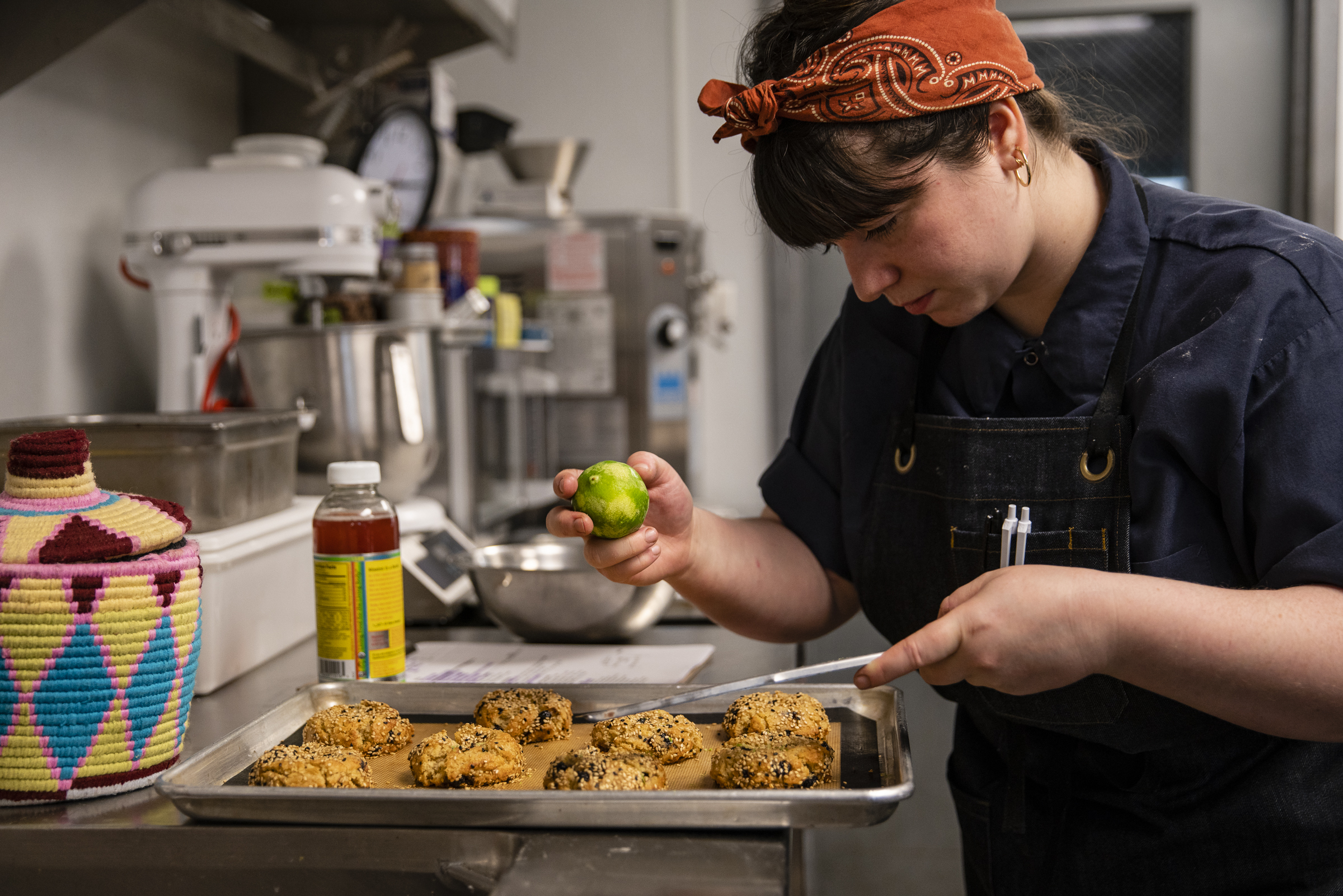
Normal days are few and far between when you’re working out the kinks of a fresh-faced restaurant, not to mention two. That said, Kanan has established a few grounding rituals. Since she’s constantly moving between spaces, tasting things, and taking bites of various family meals, she starts her day with probiotics, specifically kombucha (Health-Ade is her preferred brand) and kefir. As for caffeine, she opts for an iced latte with oat milk while setting up the bakery case in Studio—the ultimate morning ceremony. That’s when her food styling chops come in handy (she once made fake caviar for a Park Avenue party scene in a Jake Gyllenhaal movie, Demolition). “It’s a nice bonus to the process,” she says, “to get to see people actually eating the pastries” in the dining room. During the day she’ll often split a warm boureka with her bakers (five minutes after they bake is the ideal moment to eat them, “when the cheese is melted but starts to set up a bit.”) Around 5:00 pm, a server from Simon & The Whale will come bearing cortados. “I forget that it happens every day, because I’m so in the thick of it, and then someone will show up with a tray of four, and I’m just so grateful,” she confesses.
Dinner at home often means fresh fruit (“to keep it pretty tame”), a sandwich from Sunny & Annie’s, her beloved corner deli, or delivery from Caviar (usually Uncle Boons Sister or Little Tong Noodle Shop). When she’s out and about, she’ll hit Izakaya for simple Japanese fare or sister restaurant Davelle for milk toast, in the morning. Then there’s Ruffian for wine, which she’s trying to learn more about, and Empellon Al Pastor for their “insane” late-night snack menu. As a Texas girl, it’s where she gets her breakfast burrito fix. Bakery-wise, she’s all about Arcade for breads and pastries and Burrow for cookies and cakes.
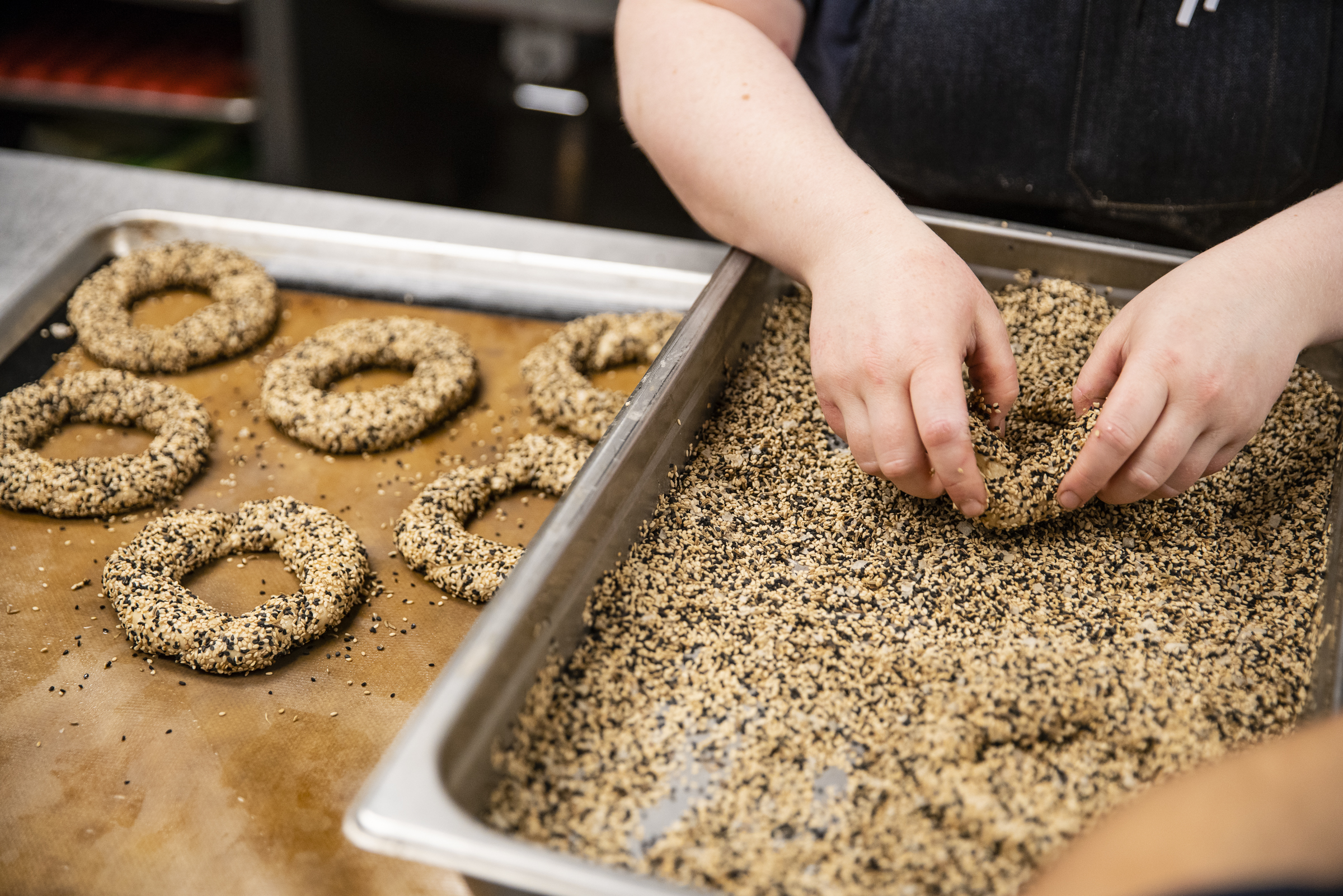
Conquests and aspirations
Of Kanan’s own creations, her favorite is the chebakia, a Moroccan cookie made with whole wheat, ground sesame, a little bit of orange blossom, and cinnamon instead of the usual ground fennel. “I usually veer away from cinnamon because I think it’s overused,” she says. “It’s delicious, but in apple pie, for example, I won’t touch cinnamon, because it’s so expected. But I used a little bit of cinnamon here, because I really liked it with the orange blossom.” The dough is twisted into knots, fried, dipped in honey—a preservation technique that’s typical of many pastries from the Mideast (as in sfenj)—and sprinkled with sesame seeds. One time, a guy came in and had one, then returned the next day and ordered 12 to take to a meeting. Other than that, besides being a staff favorite, they weren’t very popular. People didn’t know what they were. So they decided to take them off the menu for now, though she’d like to bring them back. “I really want to explore more of the pastries from that region,” she claims, “I’ve done a little bit, but I’m just trying to figure out what diners find compelling and what catches on.”
While both restaurants have certain influences at play, their concepts are flexible, which gives Kanan plenty of creative freedom. One thing she’d been vying to perfect is a Danish, which she revealed as her favorite pastry, after careful consideration. The best one she’s ever had was at the old location of Meyers Bageri in Williamsburg. She recounts the experience in awestruck detail: “I don’t think I’d ever had a Danish pastry made from a Danish bakery before that, and it blew my mind. It was really crispy, to the point where you’re eating it and it’s just flaking all over you and you’re a little bit mad about it, but it also feels like the way it’s supposed to be.” It had pastry cream and rhubarb compote, altogether “the pinnacle of texture and flavor—creamy and then also sweet and pungent and sort of wet in the middle of super crispy and crunchy edges, and buttery… it was everything a good pastry is supposed to be.” With that aspiration in mind, she’d been waiting for summertime—when there’d be fresh fruit to play with—to develop her own.
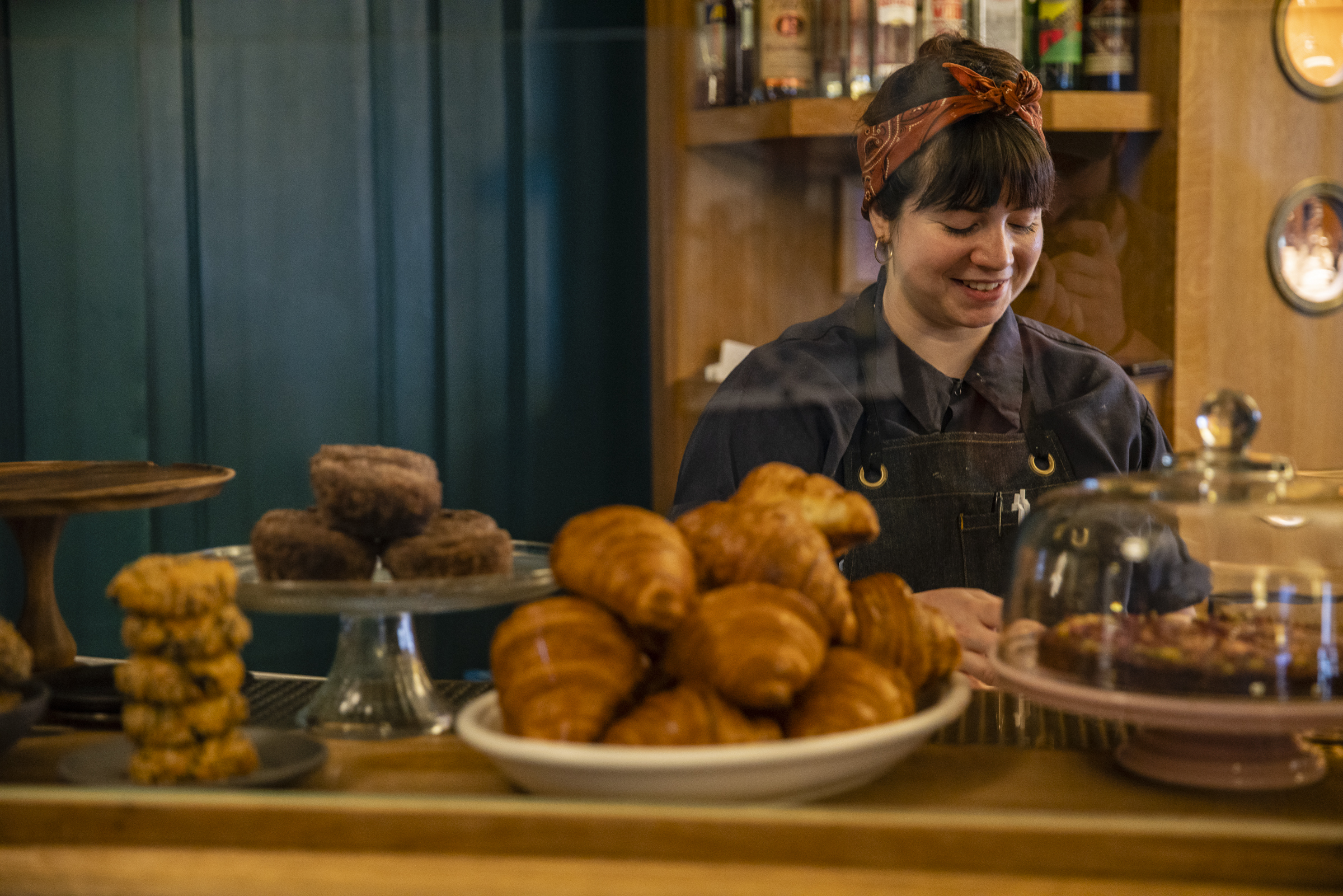
The appeal of seasonality is still novel to her, since she didn’t grow up in a place with defined seasons, but she hopes to incorporate more produce in her baking. Currently, Kanan is using local rhubarb and strawberries in the jam that tops her Persian love cake—a “dense, luxurious” almond-cardamom cake that friend and fellow baker Alison Roman aptly compared to a financier. It’s one of Studio’s best-sellers. A recent number of Kanan’s is a lunchtime focaccia at Simon with toppings that change every few days. And in conjunction with the launch of brunch, her department is now slinging Liege waffles with fresh ginger and buttermilk biscuits for an egg sandwich with crispy pork belly and gouda. Also on the menu? Her new prized possession: a nectarine and custard Danish.


